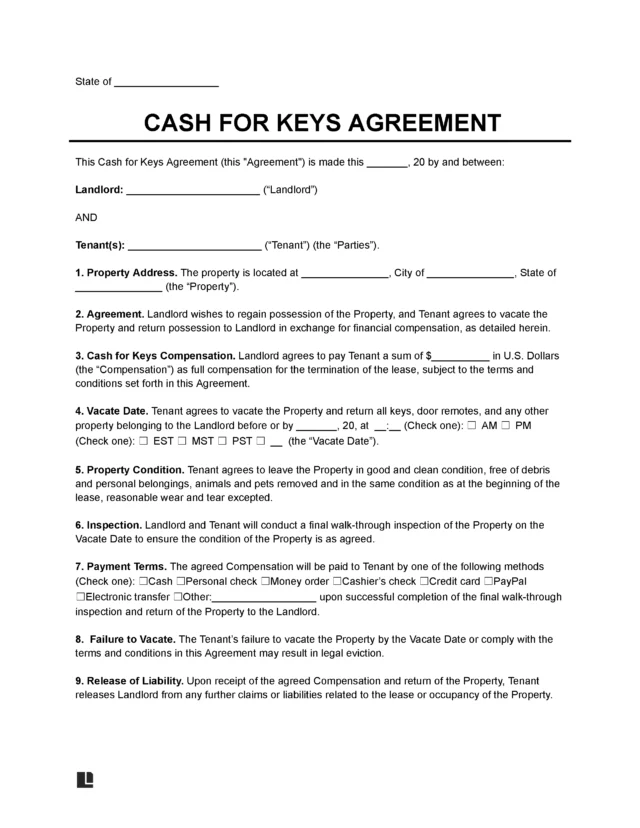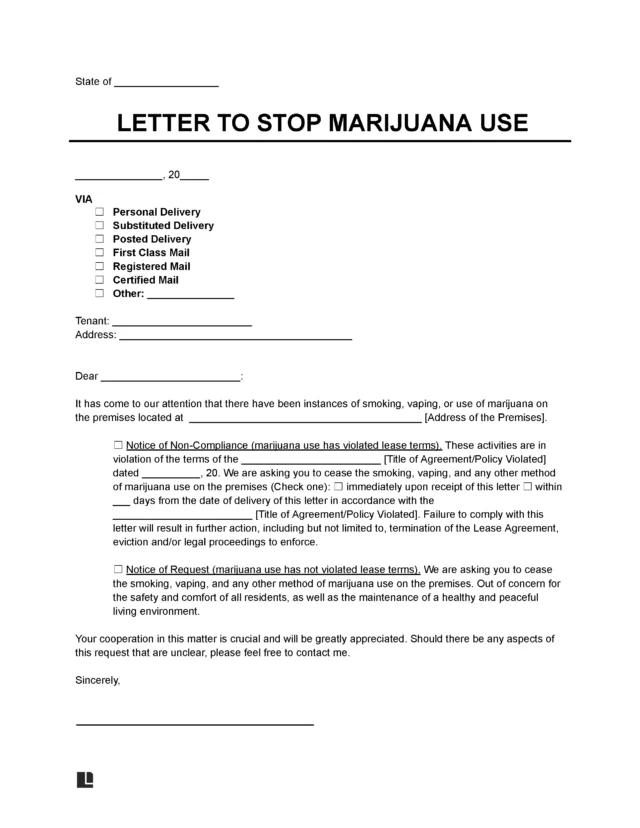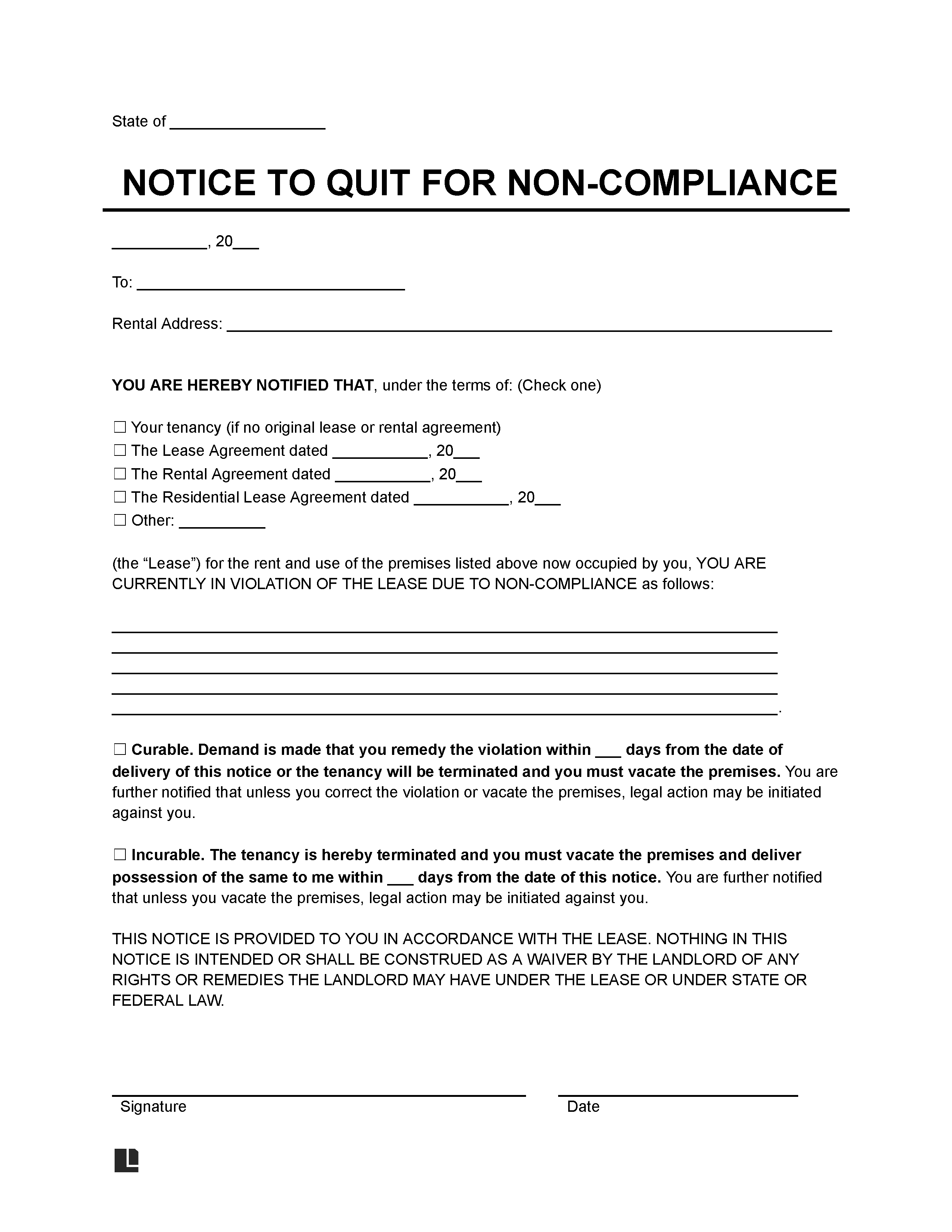What Is a Notice to Comply or Vacate?
A notice to comply or vacate is a document sent to a tenant who violates the lease terms, excluding late rent payments. Upon receiving the notice, the tenant must rectify the violation within the timeframe specified by state regulations or vacate the premises. If the violation is corrected, the lease will proceed as if it had not been breached.
Reasons for Notice
A notice to comply or vacate informs the tenant that they must correct the violation within a specific timeframe or vacate the premises. These violations can include:
- Long-term “guests” are discovered.
- Property damage.
- Smoking.
- Unauthorized animals on the property.
- Failure to maintain property upkeep.
- Loud noises leading to multiple disturbance complaints.
- Subleasing without authorization.
- Exceeding maximum occupancy.
- Violation of Homeowners Association rules.
When Does the Eviction Process Start?
Eviction for non-compliance typically starts ticking the day the tenant receives it, not the day it’s issued.
How to Serve Your Notice for Non-Compliance
Step 1 – Check Local Laws and Review the Agreement
Thoroughly review the terms and conditions of the agreement to ensure that the other party has indeed violated its terms. Check local laws before drafting the notice to make sure it adheres to all legal standards.
Step 2 – Prepare the Notice
Download a template in PDF or MS Word outlining the specific non-compliance issue, referencing the relevant sections of the agreement, and clearly stating the actions required to remedy the non-compliance.
It must include the landlord and tenant details, original lease date for reference purposes, notice period in accordance with state laws, a detailed description of any violations and the respective remedies, the signature of the landlord or agent, and a certificate of service to be filled out by the sender.
Step 3 – Choose a Delivery Method
Choose an appropriate delivery method for the notice depending on what is stipulated in the agreement or what is legally acceptable in your jurisdiction. This could include:
- Certified mail (with return receipt) via USPS
- Email (with read receipts)
- Hand delivery
- Posting
Step 4 – Perform an Inspection
Schedule a formal inspection of the property after giving the tenant proper notice. Document any evidence of non-compliance during the inspection, adhering to lease agreements and legal requirements. Assess the severity of the issue and determine next steps accordingly.
State Laws for Non-Compliance Notice Periods
| State | Notice Period for Non-Compliance | Statute |
|---|---|---|
| Alabama | 7 days | § 35-9A-421 |
| Alaska | 10 days | § 34.03.220(a)(2) |
| Arizona | 10 days | § 33-1368(A) |
| Arkansas | 14 days | § 18-60-304 |
| California | 3 days | § 1161(3) |
Curable vs. Incurable Non-Compliance
Curable noncompliance refers to violations of the lease agreement that the tenant can rectify within a given timeframe, such as unpaid rent or unauthorized pets. Landlords must provide tenants with a specific period to remedy these issues, failing which eviction proceedings may commence.
Incurable noncompliance, on the other hand, involves serious violations that cannot be corrected, such as repeated disturbances, significant damage to property, or illegal activities. In these cases, tenants are typically given a notice to vacate without the option to remedy the violation.
Tenant’s Options
- Address the Issue: Correct the problem within the specified period.
- Leave the Premises: Depart from the property by the date mentioned in the notification.
- Engage in Discussions: Talk to the property owner to find a mutual resolution.
- Get Legal Assistance: Seek advice from an attorney focused on tenant law.
- Take No Action: Risk the landlord initiating legal proceedings to evict you.
Frequently Asked Questions
Can a Tenant Challenge a Notice to Comply or Vacate?
Yes, tenants may challenge the notice if they believe it is unjustified or incorrect. They may do so by contacting the landlord to discuss the issue or through legal channels, depending on the jurisdiction.
What Happens if the Tenant Fails to Comply Within the Given Timeframe?
If the tenant does not comply with the notice’s demands or vacate the property, the landlord may proceed with eviction proceedings in accordance with local laws.
Are There Different Types of Notices for Different Violations?
Yes, some jurisdictions require specific notices for certain types of violations (e.g., nonpayment of rent, unauthorized occupants). It’s important to use the correct notice type to ensure the legality of the process
What Should a Landlord Do if the Tenant Complies With the Notice?
If the tenant rectifies the issue within the specified period, the landlord should acknowledge the compliance in writing and take no further action regarding eviction.




